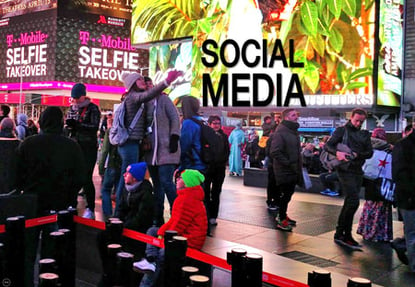 Last week I wrote about the tools for creating innovative ads detailed in the book “Cracking the Ad Code” and our #BZBowl strategy to use its model to evaluate Super Bowl ads. The book’s authors maintain that most ads that are judged to be creative by both ad professionals and consumers use one or more techniques from a rather limited toolbox of eight techniques.
Last week I wrote about the tools for creating innovative ads detailed in the book “Cracking the Ad Code” and our #BZBowl strategy to use its model to evaluate Super Bowl ads. The book’s authors maintain that most ads that are judged to be creative by both ad professionals and consumers use one or more techniques from a rather limited toolbox of eight techniques.
My look at the 68 national Super Bowl ads that ran from kickoff to the end of the break following the final whistle showed that 77% of the ads used one or more of the "Cracking the Ad Code" tools. (This excludes the movie ads in the Super Bowl, where the tools really don’t apply.)
I also looked at how the Super Bowl ads were rated on both the Foxsports.com/ads website and by the USA Today Ad Meters to see if highly rated Super Bowl ads were more or less likely to use the “Cracking the Ad Code” tools. The visitors to the Foxsports.com site gave the average non-movie ad a score of 63 (out of 100). Those that did not use any of the tools got a score of 55, while those that used one tool had an average score of 69. Interestingly those that attempted to use two tools got an average score of only 57. There must be something to be said for simplicity and focus.
USA Today used handheld meters to track the second-by-second scores given to Super Bowl ads by 282 adult volunteers at two locations. On their 1 to 10 scale, the average non-movie ad came in at 6.51. Those ads using no tools scored 6.28, those using one tool scored 6.79 and those using two scored 6.05. Eight out of the top ten Super Bowl ads used at least one tool; the ones that didn’t were the crowdsourced ads for Pepsi Max.
The most frequently used tool from the “Cracking the Ad Code” kit was the one they call Extreme Consequences. It was used in 18 of the non-movie Super Bowl ads. This technique involves the exaggerated or absurd result of using a product. Think of the Doritos spot (another crowdsourced ad) where the chips bring a goldfish, a plant, and somebody’s grandfather back to life.
Eleven spots each used the Extreme Effort and the Inversion "Cracking the Ad Code" tools. The Extreme Effort technique shows the exaggerated lengths to which a consumer will go to get (or protect) a product or that the company will go to bring it to him. The Bud Light Product Placement ad is probably the best example from this year’s Super Bowl.
The Inversion tool shows an extreme version of what your world would be like without the product. The Careerbuilders.com Super Bowl ad showing the chimps hemming the guy in his car is a good example.
If you are assigned to come up with your organization’s next great ad, using the tools won’t ensure that your concepts will be innovative and effective, but they will give you a good benchmark from which to work. - Barrett Sydnor


